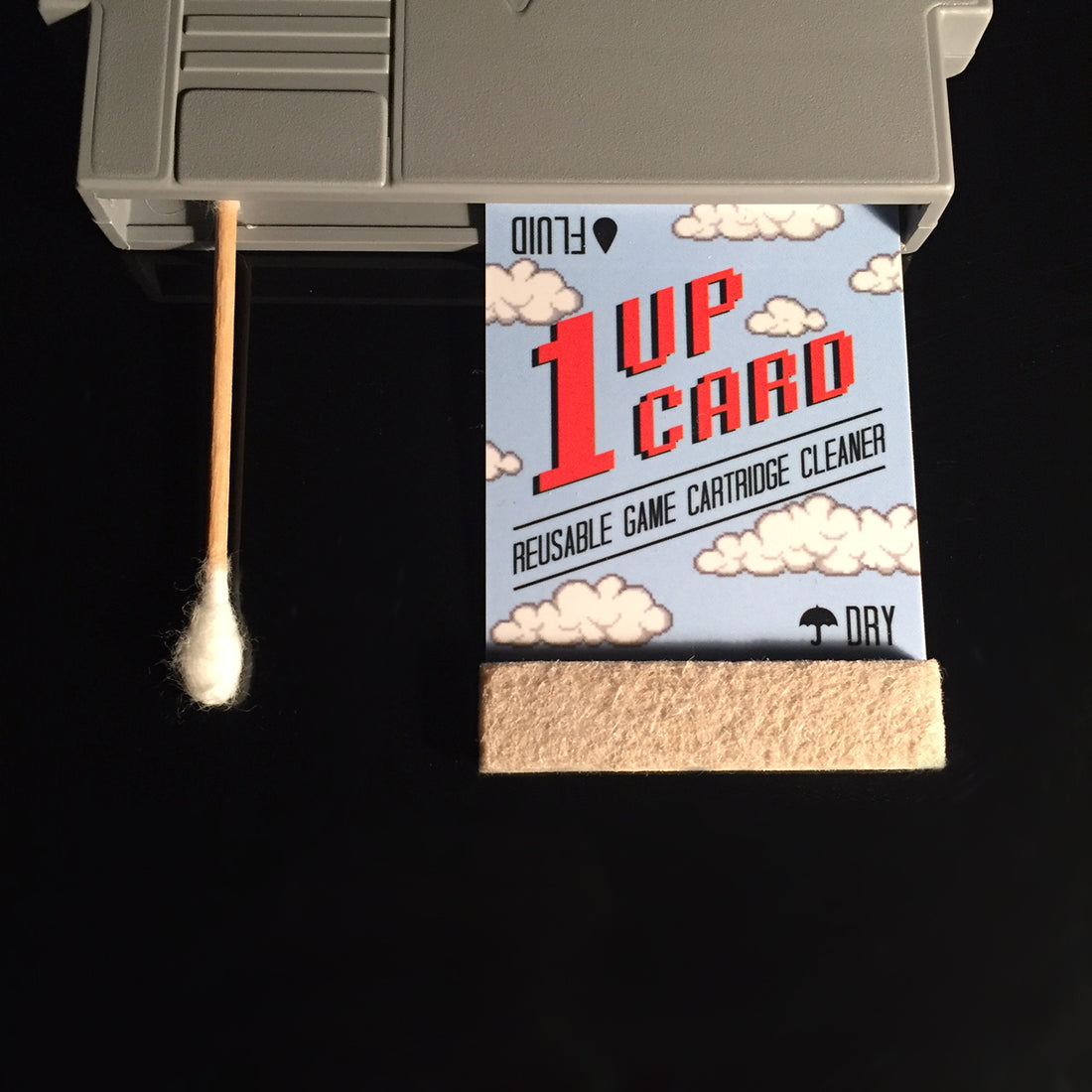
Cleaning Game Cartridges
It’s a Saturday morning. You don’t have to work. You don’t have to go anywhere in fact. It’s 1:00 pm and you’re still sitting in the living room, unwashed, in your PJs, with the quilt from the back of the couch wrapped around your shoulders.
The conditions are perfect to bust out those old gaming systems and return to a simpler time in your life. Grab yourself an orange soda and settle in. You open up the tied-up Walmart bag that holds the console, cartridges, controllers, and wound up cords. You get it all plugged in. You slap in your copy of Battletoads. It starts up, but all you see is a mess of letters and colored cubes.
Easy fix. Take the cartridge out, blow in the bottom of it, blow in the console, give it another go, right?

This age-old method of cleaning your gaming cartridges is actually harmful to the game. And you want to protect that sweet, sweet nostalgia.
When you blow into a cartridge, the moisture from your breath collects on the inside of the cartridge and can cause the metal to rust[1]. You might find yourself saying, “I’ve been doing this for years and my cartridges still work!” You may not see the negative effect from this right away. But if you’re blowing into the cartridge every time it glitches for decades, it will start to deteriorate[2]. And the more time that passes, the harder it will be to find a replacement for your favorite games. So, protect the games that you have.

This method of rebooting is not only damaging, but ineffective. Much of the dust, dirt, and patina on the cartridge will not be cleaned off. “But it works for me, I swear!” It does, but not because you’re blowing on it. Likely, what you’re doing is giving the game another chance to make a good connection[3]. But, you’re also inflicting damage on the cartridge for no good reason. You’d be better off simply removing the game and reinserting it to give it another chance[4].
Frankie Viturello, a host from Digital Press Webcast, did a side-by-side test of two NES cartridges. The two cartridges were left in the open air in the same room. He blew on one of the cartridges ten times a day to imitate a long period of use. After a month, all of the 72 connector pins that had been blown on had corroded. The other cartridge looked the same as it did at the beginning of the experiment4.
Instead of risking the integrity of your gaming cartridge, start employing a simpler, safer method of cleaning. One of the most popular recommendations is a Q-tip and some isopropyl alcohol2. Gently wipe out the inside of the cartridge with the damped Q-tip.
Using isopropyl alcohol is more effective than trying to clean with a dry Q-tip because it holds onto more dust and dirt. If you use a dry Q-tip, it will most likely just smash the debris into the bottom and corners of the cartridge.
Unfortunately, with this method, the Q-tips can start to pull apart and leave fluff behind on the contacts. You’ll have to take the time to clear all out all of the fibers before putting the cartridge back in the game.
For a faster, more convenient option, consider something like the 1UPcard Video Game Cartridge Cleaning Kit. It comes in two sizes, one for regular console gaming cartridges and one for smaller cartridges for portable gaming devices. 1UPcards are compatible with Nintendo, Super Nintendo, Sega Genesis, N64, Atari, Game Boy, and more.
The 1UPcard is a durable, reusable cleaning card with two felt pads on each end. One pad can be dampened with the cleaning fluid and the other left dry so that no excess fluid is left on the cartridge. The width of the card will clean cartridges much faster and more thoroughly than using a Q-tip would.

The 1UPcard can be reused up over 150 times and can be washed with soap and water if the pads become too dirty. It cleans the game cartridge quickly and effectively without leaving behind any fluff.
The fluid that is sold in the kit bundle is 99% isopropyl alcohol. For cleaning gaming cartridges, the higher the concentration of the isopropyl alcohol the better[5]. The higher the concentration, the less water there is. As we learned earlier in this article, you don’t want water left on the cartridge because it will cause corrosion.
“Why can’t I just buy my own isopropyl alcohol?” You can! The major upsides for the 1UPcard cleaning fluid are the size and shape of the bottle. It’s easier to store a small bottle and you have a lot more control over how much fluid is being dispensed onto the cleaning pad. And, that tiny bottle will still give you about 100 uses. Plus, whereas most drug stores will carry 50%, 70% or 90% isopropyl alcohol, the pure 99% can be harder to find.
This kit can be bundled up and left with your cartridges for easy use when you need it rather than having a pack of single use Q-tips floating around. When you find yourself staring at a screen full of nonsense instead of the opening title, grab your kit, pour a couple of drops on the 1UPcard pad, clean it, dry it, pop it back in, and get to gaming.
![]()
Let’s go back to the living room where you are still sitting with your console and glitching game. Do you want to waste your precious lazy afternoon cleaning with half a dozen Q-tips, or do you want to get to gaming as soon as possible?
Let 1UPcard save you time and save you from a pile of dusty Q-tips.
[1]https://www.nintendo.com/consumer/systems/nes/trouble_game.jsp
[2] https://gemr.com/blog/blow-video-game-cartridges/
[3]Taylor Soper, https://www.geekwire.com/2014/blow-nintendo-games/
[4]Chris Higgins, http://mentalfloss.com/article/12589/did-blowing-nintendo-cartridges-really-help
[5] http://retrowaretv.com/the-dos-and-donts-of-game-cartridge-cleaning/
"Glitch" image credit: Gavin Reed


